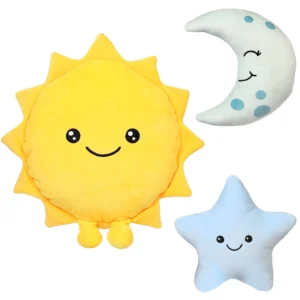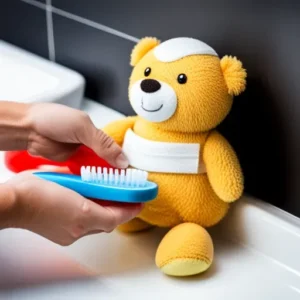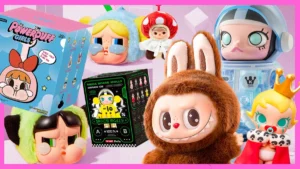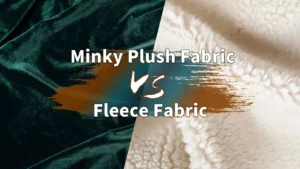When it comes to choosing a plush toy for your baby, it’s more than just picking a soft, cuddly item. The right plush toy can become a cherished companion, providing comfort and even playing a role in your baby’s development. But how do you ensure you’re picking the best plush toy for your little one? Is it enough for the toy to just be cute, or do other factors play a bigger role?
The best plush toys for babies are not only soft and comforting but are also safe, easy to clean, and contribute to a baby’s sensory and emotional development. Choosing the right toy means considering materials, size, and developmental benefits.
In this guide, we’ll explore everything you need to know when selecting the best plush toy for your baby, from understanding what features to look for to identifying the top plush toys on the market today. Whether you’re looking for a first cuddly companion or a developmental tool, this article will help you make the best decision for your baby’s needs.
1. What Should You Look for in a Plush Toy for Babies?
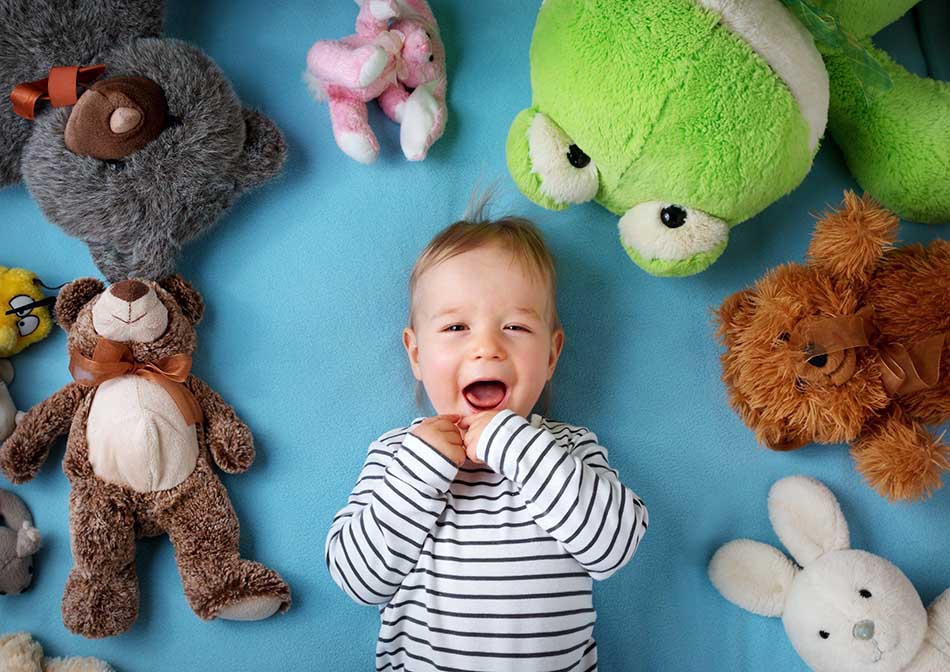
When selecting a plush toy for a baby, safety, comfort, and developmental benefits are the top priorities. Babies are naturally curious and sensitive, so the toy must meet these criteria to ensure it serves its purpose without causing harm.
For babies, plush toys should be soft, safe, and made from non-toxic materials. They should also be age-appropriate and free from small parts that could pose choking hazards.
- Softness and Safety: Plush toys should be made of soft materials like velboa, fleece, or cotton. These fabrics are gentle on a baby’s sensitive skin and provide comfort. Additionally, make sure the plush toy is free from small parts, such as buttons or beads, that can be a choking hazard. Check that the toy is safety-tested and meets the required safety standards, such as ASTM or CPSIA certifications.
- Size and Weight: The size of the plush toy is crucial for a baby. It should be large enough that it’s not a choking hazard, but not too large that it becomes unwieldy for the baby to hold or carry. Babies tend to explore toys with their mouths, so make sure the toy is easy for them to grip.
- Design and Appeal: Babies are attracted to bright colors and simple, recognizable shapes. A plush toy with friendly eyes or a smiling face can engage a baby’s visual and emotional senses, providing comfort and interaction. It also helps if the toy features textures or patterns that will keep the baby’s attention.
| Feature | Why It’s Important | Example |
|---|---|---|
| Softness | Prevents discomfort and skin irritation | Fleece or cotton-based toys |
| Safety | Prevents choking hazards and toxicity | CPSIA certified, no small parts |
| Size and Weight | Ensures easy handling for babies | Appropriate for baby’s grip size |
| Design and Appeal | Stimulates sensory and emotional growth | Bright colors, friendly faces |
2. Which Materials Are Best for Baby Plush Toys?
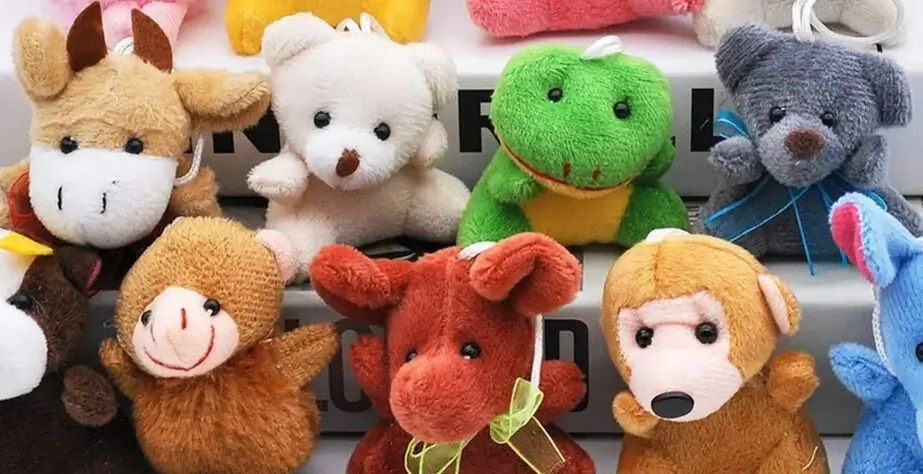
The material used in a plush toy is one of the most important factors when choosing a toy for your baby. Babies have delicate skin, and some materials might cause discomfort or allergic reactions. Understanding which materials are safe and comfortable is essential.
The best materials for baby plush toys are soft, non-toxic, hypoallergenic, and durable. Fabrics like cotton, fleece, and organic fibers are ideal for ensuring comfort and safety.
- Cotton: Cotton is a natural, breathable fabric that is soft against a baby’s skin. Organic cotton is an even better option for babies with sensitive skin, as it is free from harsh chemicals often used in conventional cotton farming.
- Fleece: Fleece is another soft material, and it offers warmth while being lightweight. It’s also hypoallergenic and easy to clean, which is perfect for a baby’s toy.
- Velboa and Velour: These polyester-based fabrics are often used in plush toys for their soft, velvety texture. They are durable and retain their softness after multiple washes.
- Eco-friendly Materials: Many manufacturers now offer plush toys made from recycled polyester, organic cotton, or other sustainable materials. These are great for environmentally conscious parents who want to ensure the toys they purchase are safe for both their baby and the planet.
| Material | Benefits | Ideal Use |
|---|---|---|
| Cotton | Soft, breathable, hypoallergenic | Baby toys for sensitive skin |
| Fleece | Soft, warm, easy to clean | Ideal for winter plush toys |
| Velboa/Velour | Soft, velvety, durable | Soft toys, easy to wash |
| Eco-friendly Fabrics | Sustainable, free from harmful chemicals | Environmentally-conscious toys |
3. How Do Plush Toys Benefit a Baby’s Development?
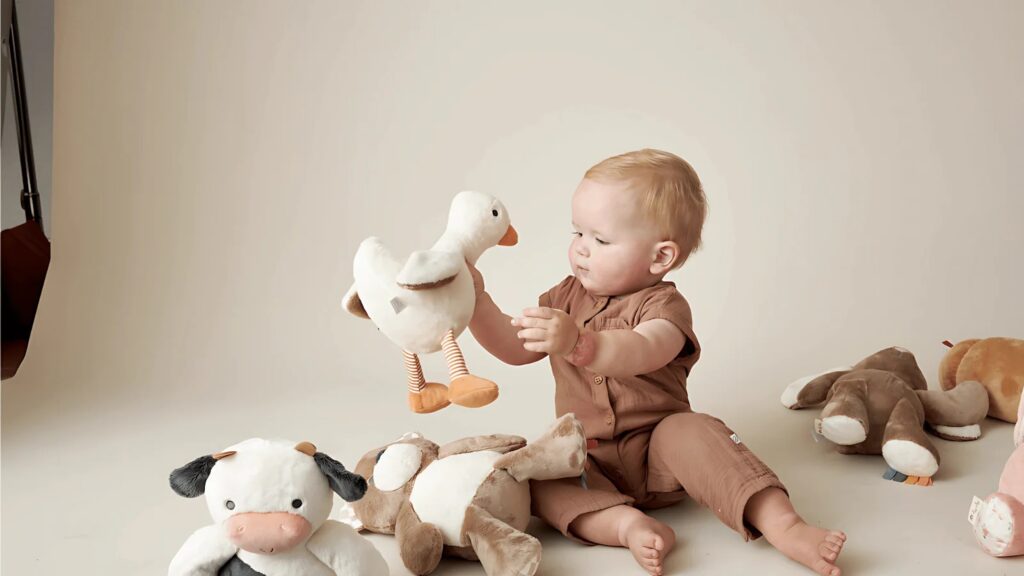
Beyond being comforting companions, plush toys play a significant role in a baby’s development. From sensory exploration to emotional bonding, these toys can help stimulate key areas of development in early childhood.
Plush toys aid in sensory development, provide emotional comfort, and encourage cognitive growth by introducing babies to concepts such as color, texture, and recognition.
- Sensory Stimulation: Plush toys often come in various textures, sounds, and colors, providing sensory stimulation. For instance, a plush toy with crinkly material inside can introduce the baby to new sounds, while brightly colored fabrics encourage visual development. The soft texture of plush toys helps babies explore tactile sensations, which is crucial for their sensory development.
- Emotional Comfort: Plush toys are also used for emotional comfort. Babies tend to develop attachment to certain objects, and plush toys are often the chosen comfort items. These toys help babies feel secure, offering familiarity and comfort during naps, bedtime, or when separated from their parents.
- Cognitive Development: Some plush toys come with interactive features like rattles, mirrors, or detachable parts, which encourage babies to problem-solve and improve their fine motor skills. For instance, toys that encourage reaching, grasping, and squeezing can promote hand-eye coordination and dexterity.
| Developmental Benefit | Example | Toy Features |
|---|---|---|
| Sensory Stimulation | Crinkly fabric, bright colors | Textures, sounds, and colors |
| Emotional Comfort | Teddy bears, cuddly toys | Soft, comforting designs |
| Cognitive Development | Interactive plush toys | Mirrors, rattles, moving parts |
4. Are There Any Plush Toys That Are Specifically Designed for Newborns?
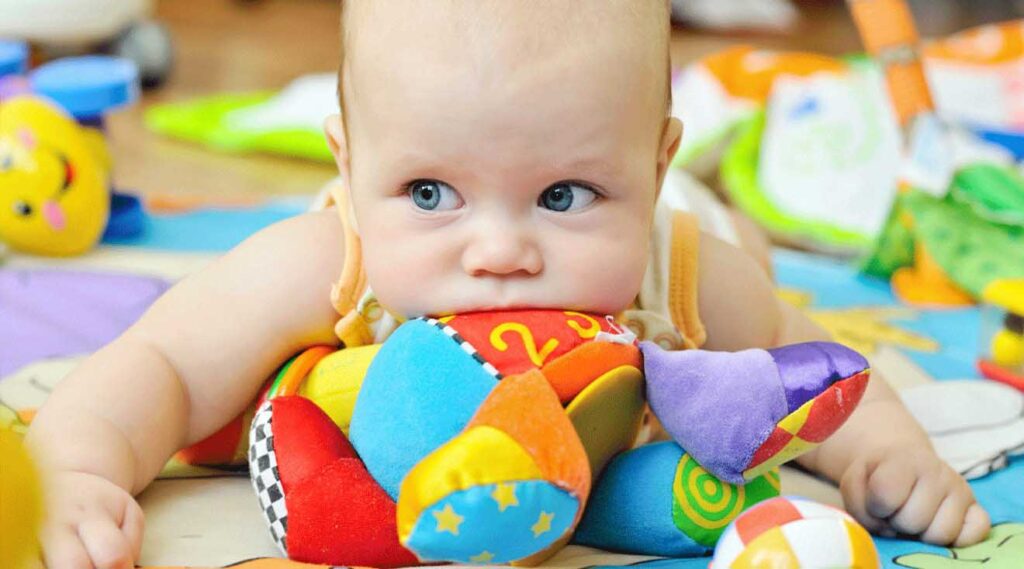
Newborns require special care when it comes to toys. Their toys need to be ultra-soft, safe, and simple. Many plush toys are specifically designed for newborns, focusing on safety and sensory engagement without overcomplicating things.
Plush toys designed for newborns are typically simple, soft, and free of any small parts. These toys are often made from ultra-soft fabrics and designed to be comforting and safe for babies who are just starting to explore their world.
- Safety Features: Newborn plush toys are designed with safety in mind. They are free from detachable parts like buttons or beads that could pose a choking hazard. Many newborn plush toys are also machine washable, as babies tend to make a mess!
- Soft and Lightweight: For newborns, plush toys need to be extremely soft and lightweight, ensuring they are easy to handle and don’t cause discomfort. Newborn plush toys are also designed to be easy for babies to hold and cuddle, offering a sense of security.
- Simple Designs: The best newborn plush toys have minimal details, with gentle faces and soft fabrics that are safe for sensitive skin. These toys often feature basic shapes and colors, helping newborns develop early visual recognition.
| Design Feature | Why It’s Important | Example |
|---|---|---|
| Safety | No small parts, non-toxic materials | No beads, buttons, or loose pieces |
| Softness | Ensures comfort and safety for newborns | Soft fabrics like cotton or fleece |
| Simplicity | Focuses on essential sensory features | Simple designs, basic colors |
5. What Are the Top Plush Toy Recommendations for Babies?
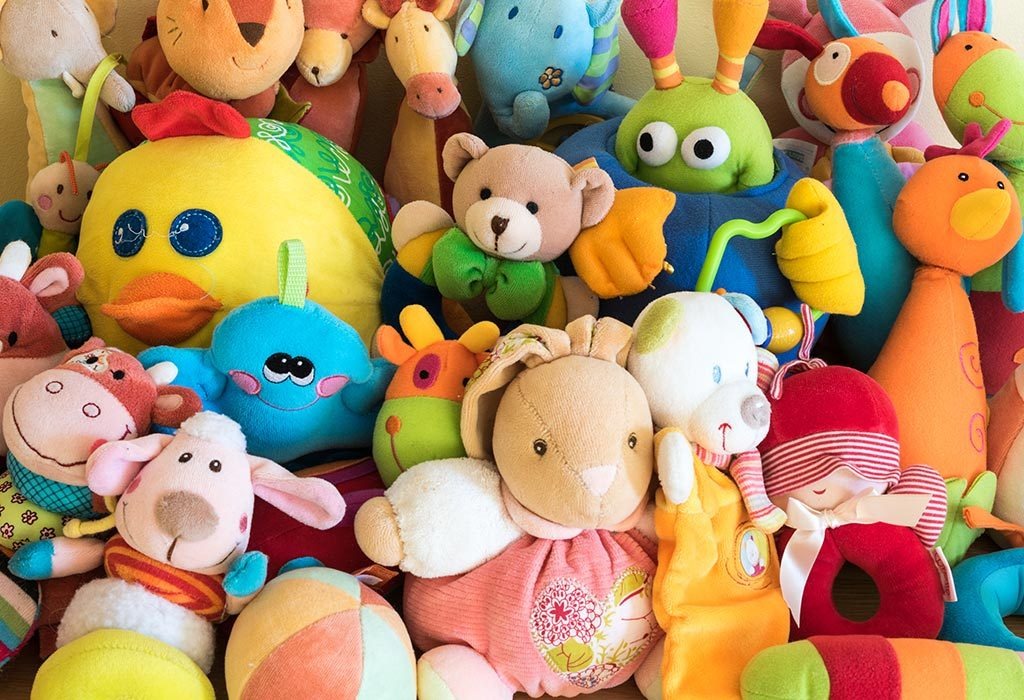
There are many plush toys on the market, but some stand out for their quality, safety, and appeal. Here are some of the best plush toys for babies, highly recommended by parents and experts alike.
The best plush toys for babies are soft, safe, and engaging. Some top choices include Fisher-Price’s Peek-a-Boo Bear, Jellycat’s Bashful Bunny, and GUND’s My First Teddy.
- Fisher-Price Peek-a-Boo Bear: This plush toy features a soft, plush bear that plays peek-a-boo with a baby, encouraging interaction. It is designed for infants and has soft, non-toxic materials.
- Jellycat Bashful Bunny: Known for its ultra-soft fabric, this plush bunny is a favorite among parents for its comforting design and gentle colors. Its soft ears make it perfect for newborns to hold and cuddle.
- GUND My First Teddy: This classic teddy bear from GUND is a go-to choice for many parents. It’s soft, simple, and features an embroidered face, making it safe for babies. The quality craftsmanship ensures durability, even with frequent washes.
| Plush Toy | Features | Age Range |
|---|---|---|
| Fisher-Price Bear | Plays peek-a-boo, soft, interactive | 0-12 months |
| Jellycat Bunny | Ultra-soft, cuddly, safe for babies | 0-6 months |
| GUND Teddy Bear | Embroidered face, timeless design | 0-12 months |
6. How Can You Ensure the Plush Toy Is Safe for Babies?
Safety is the number one concern when choosing a plush toy for your baby. Manufacturers have stringent regulations to ensure their toys meet safety standards, but it’s always essential for parents to double-check and ensure that toys are appropriate for their child’s age and development stage.
To ensure safety, check for CPSIA certification, avoid small detachable parts, and choose plush toys that are machine washable and non-toxic.
- Safety Certifications: Make sure that the plush toy is CPSIA (Consumer Product Safety Improvement Act) certified in the United States or has other similar safety standards in place. This ensures that the toy has been tested for harmful chemicals, choking hazards, and other risks.
- No Detachable Parts: Always choose toys that don’t have small parts that can come off easily. Babies tend to explore toys by putting them in their mouths, so small buttons or beads should be avoided.
- Washability: Babies make messes, and it’s essential to choose a plush toy that can be easily cleaned. Machine-washable toys are a great option for parents, as they can be cleaned quickly and thoroughly.
| Safety Feature | Importance | Example |
|---|---|---|
| Safety Certifications | Ensures compliance with safety standards | CPSIA certification, CE mark |
| No Small Parts | Prevents choking hazards | No buttons, beads, or detachable pieces |
| Washability | Allows for easy cleaning | Machine-washable plush toys |
Conclusion
Choosing the best plush toy for your baby goes beyond finding something cute and cuddly. It involves considering the toy’s safety, materials, developmental benefits, and durability. With the right choice, your baby will not only enjoy a soft, comforting companion but also gain valuable developmental benefits.
At Kinwin, we specialize in creating high-quality plush toys designed with safety, comfort, and durability in mind. If you’re interested in custom plush toys for your baby or have any inquiries, feel free to contact us today for a personalized quote!




